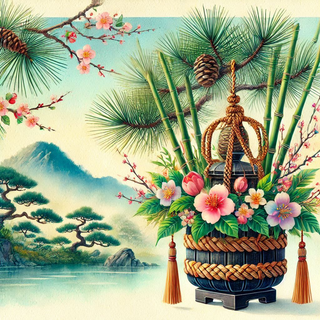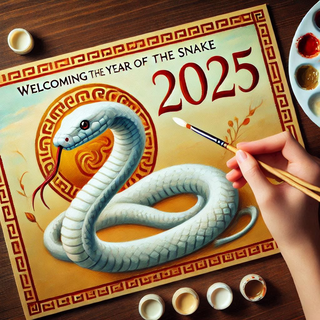January 2nd is also a special day in Japan to continue celebrating the New Year, with the following traditional events and customs:
Hakone Ekiden: An annual university long-distance relay race held on January 2nd and 3rd, covering a round trip between Tokyo and Hakone. It is a nationwide event that attracts significant attention.
Hatsuuri (First Sale): Many stores and department stores hold big sales as their first business day of the new year. Fukubukuro (lucky bags) and discount sales are popular, drawing many people to enjoy shopping.
Nenshi-mawari (New Year's Visits): A custom of visiting relatives, friends, and business partners to exchange New Year's greetings. People make in-person visits in addition to sending New Year's cards.
Kadomatsu and Shimekazari: New Year's decorations are displayed to continue enjoying the festive atmosphere. Kadomatsu and shimekazari are typically kept up until around January 7th.
Osechi Cuisine: January 2nd is also a day to enjoy osechi cuisine with family. Osechi is usually eaten over three days, with families continuing to share these special dishes.
Hatsuyume (First Dream): The first dream seen on the night of January 1st to 2nd is considered auspicious. It is said that dreaming of "Ichifuji, Nitaka, Sannasubi" (Mount Fuji, a hawk, and an eggplant) brings good luck for the year.
Regional Differences in Kadomatsu and Shimekazari
KadomatsuKanto Region: Combines pine, bamboo, and plum, with bamboo placed in the center. The top of the bamboo is cut diagonally and arranged in three tiers.
Kansai Region: Places bamboo vertically with cuts at the top and bottom. Bamboo is typically cut horizontally at the top, decorated with pine and plum.
Tohoku Region: Creates shorter kadomatsu due to heavy snowfall, using pine or cedar, and less bamboo.
Kyushu Region: Creates simple kadomatsu with minimal decorations, using bamboo along with pine and nandina.
ShimekazariKanto Region: Features a "Tamakazari," a circular bundle of rice straw, adorned with shide (paper strips) and a daidai (bitter orange).
Kansai Region: Uses a "Wakazari," a ring-shaped bundle of rice straw, often decorated with more elaborate elements.
Shikoku Region: Typically hangs bundles of rice straw horizontally, adorned with shide, kombu (kelp), and shrimp.
Kyushu Region: Uses a "Tatekazari," a vertical bundle of rice straw, simply decorated with shide, a daidai, and nandina.
Origins of Kadomatsu and ShimekazariKadomatsu and shimekazari originate from ancient customs during Japan's early to medieval periods. Kadomatsu, pine branches or leaves, are displayed at gates or entrances to welcome the New Year and are considered auspicious. Shimekazari are often placed at home or shop entrances as symbols of good luck.
These decorations serve to ward off evil and pray for a bountiful harvest and business success. Kadomatsu, in particular, became widely popular among the common people during the Edo period and continues to be a cherished New Year tradition.







